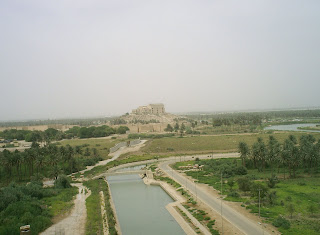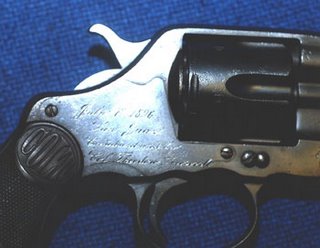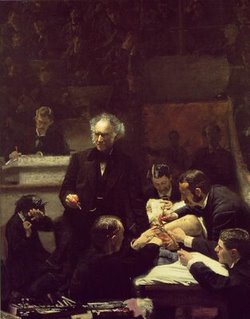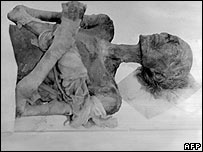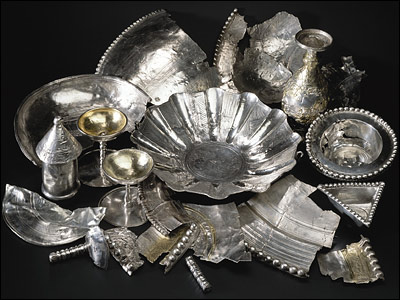
Philadelphia Mayor John Street announced yesterday that the $68 million needed to keep the Gross Clinic in the city has been raised. The Philadelphia Museum of Art and the Pennsylvania Academy of the Fine Arts will share ownership of Thomas Eakins' 1875 depiction of a surgical procedure. Exactly how much money was raised, and how much the 2 art institutions have had to borrow to match the purchase price remains to be seen. It's been estimated that about $30 million has been donated in the six weeks since Thomas Jefferson University announced it would sell the work to the new Crystal Bridges Museum, and the National Gallery if the purchase price was not matched locally.
The decision to sell the painting was met by a great deal of local protest, but it seems all the parties involved, with the exception the original purchasers, have come out looking good. The University gets its funds, the work has received a great deal of publicity and should be visited a great deal in the coming months, and Philadelphia has kept one of its prized local works. However, some have pointed out that the fund-raising push may limit the amount donors are willing to give to other good, non-charitable, causes.
At the heart of the decision to sell the work, lies a question which often plagues cultural property. Do very beautiful works have a single home, or can they be enjoyed and appreciated anywhere? That's a question without an easy answer. Those who donated to this effort felt strongly that this work belongs in Philadelphia. Though it would have been enjoyed and appreciated in Arkansas, Philadelphia would have lost a measure of civic pride. In any event, for the foreseeable future, the Gross Clinic will remain in Philadelphia.















